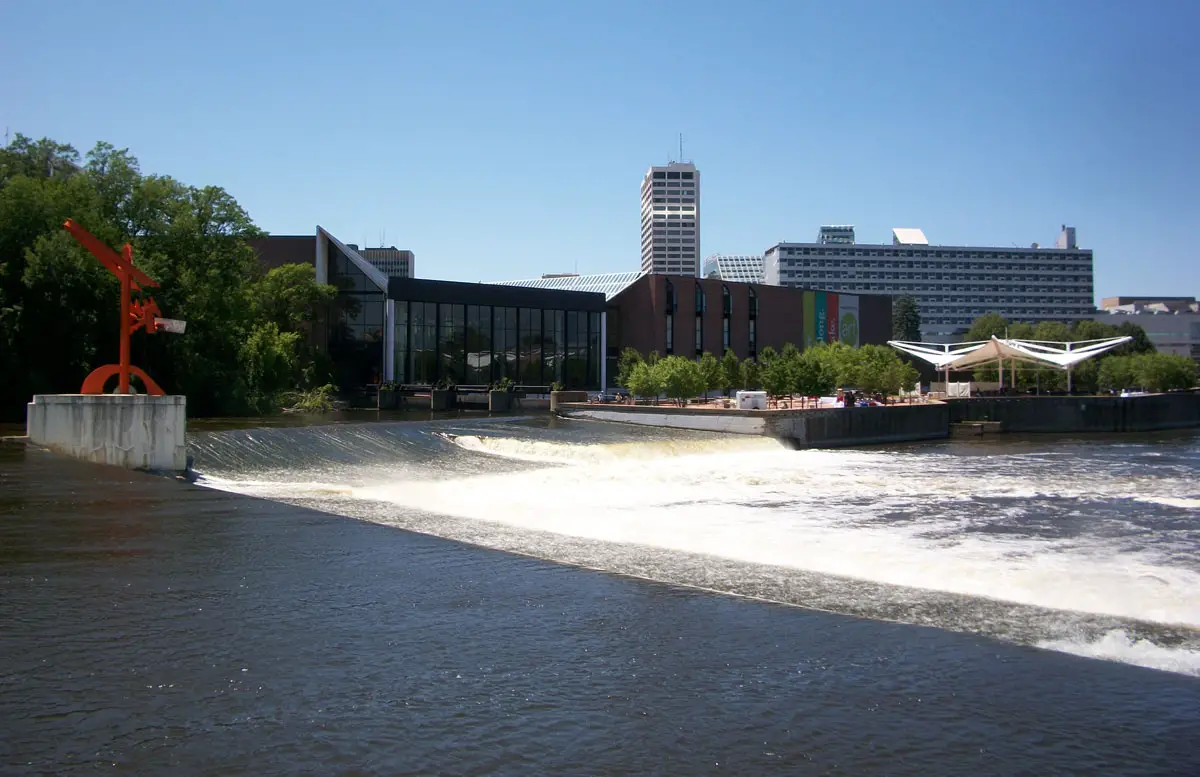You probably have never heard of the Office of Sustainability.
Situated in a nondescript office building on the former highly industrial Sample Street — tucked away in a corner of the city’s Public Works division — the Office of Sustainability looks to assist in South Bend’s rebirth as a place where people can live, work and play without damaging the surrounding environment.
The goal is for the city to be forward-thinking in its approach to the environment, economy and urban planning, promoting growth in a way that maximizes the city’s assets while addressing long-standing issues.
The Office, which as we reported yesterday is seeking public input, just came into existence this year, although its goals and responsibilities were part of the city’s former Municipal Energy Office.
Created in 2010 as part of the American Recovery and Reinvestment Act, the Energy Office worked on the recommendations of the Green Ribbon Commission — a commission of citizens appointed by former South Bend Mayor Steve Luecke. The Green Ribbon Commission was tasked with finding ways to reduce the city’s carbon footprint and identify energy efficiency solutions.
The Office of Sustainability is putting those ideas into practice. Energy efficiency, renewable energy and transportation (Smart Streets) are among just a few of the projects that the Office is currently working on or has worked on in the past as the Energy Office.
These investments will not only increase the quality of life in South Bend, they are saving taxpayers millions of dollars.
“From energy efficiency projects started by the Energy Office, there have been more than 30 energy projects in the community, resulting in about $17 million in executed and anticipated energy savings through 2021,” says Sustainability Coordinator Krista Bailey.
The Office of Sustainability is likely the only part of city government that not only completely pays for itself; it helps the city to achieve significant cost savings in other departments.
A big part of the cost savings is coming from the increased use of energy efficiency standards but renewable energy sources are also playing a part.
“We are evaluating several opportunities for renewable energy,” says Therse Dorau, the Director of the Office of Sustainability.
She points to a possible new hydro-electric facility at the city’s already-existing dam in downtown.
The larger turbine will replace a smaller pilot project, which has powered a number of city-owned buildings and lighting along the East Race since 2012. That project saved the city $40,000 per year and was financed with federal grant dollars.
“It actually uses the existing flow [of the river],” Dorau notes.
South Bend International Airport is also looking to install geothermal energy to help power the heating and cooling system.
There are, however, several roadblocks to expanding renewable energy usage in the region. Dorau points to the need to work with local utility companies, which requires a good deal of coordination between several actors. Another challenge is the fact that Indiana has relatively cheap electricity rates compared to other regions in the US.
The economics of renewable energy will change in the coming years as both solar and wind power continues to see their cost per watt rapidly decline. Renewables overtook fossil fuels in terms of capital investment in 2009.
Wind has proven particularly popular. Wind energy is now the largest single source of new electricity generation capacity in the US. Wind power had $25 billion worth of investment in 2012, representing 43 percent of all new electric power generation.
Solar is taking off as well. One of the reasons for the rapidly declining cost of solar is improved technology, which is capable of harnessing more energy with the same number of solar cells. It is estimated that solar power could be as cheap as the national average from all sources in roughly five years and half the price of coal by 2030.
Solar is making inroads on the local level. Indiana Michigan Power recently announced that South Bend would be home to a new solar power plant. And despite unfavorable state-level policies towards renewable energy compared to states like California, Indiana has still managed to rank 11th in the nation in terms of solar power capacity added in 2013.
South Bend is even home to one of the largest solar power providers in the country. Inovateus Solar is located on the outskirts of town near the Michigan border.
Inovateus has partnered with GE to build a 100-kilowatt-hour solar carport.
“It can generate enough energy to offset the power needed to charge up to 13 electric vehicles per day as well as all the lighting in the parking lot,” the company says on their website.
Renewable energy is not the only focus of the Office of Sustainability.
The office is working with various city departments on a number of different projects: the city’s “Smart Streets” initiative, that will increase the use of bike lanes, slow traffic and encourage pedestrian use; community gardens and improving the city’s parks; facilitating recycling for local organizations interested in the service; and using plants and trees to reduce storm water overflows, which could save the city on its EPA-mandated improvements.
You can find out more about the Office of Sustainability at http://southbendin.gov/sustainability.
Residents are also encouraged to complete a survey on their site to identify problem areas in the city, opportunities, and ideas for making South Bend a better place for everyone in the community.
————










